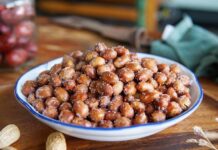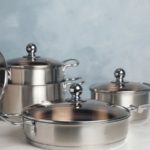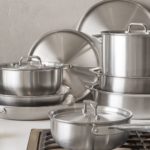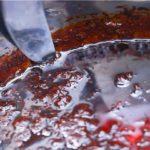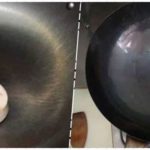Scratched Pan Surface
According to the American Cancer Society, Perfluorooctanoic Acid (PFOA), also known as C8, is a synthetic chemical used in the production of non-stick pans. PFOA poses a risk of cancer.
Therefore, when the surface of the pan is scratched, this chemical can easily leach and mix into the food. Sometimes, users may mistake the spotted chemicals on the pan for black pepper flakes in the food.
In addition to PFOA, many other chemicals used in the production of non-stick pans can seep into the food during cooking.
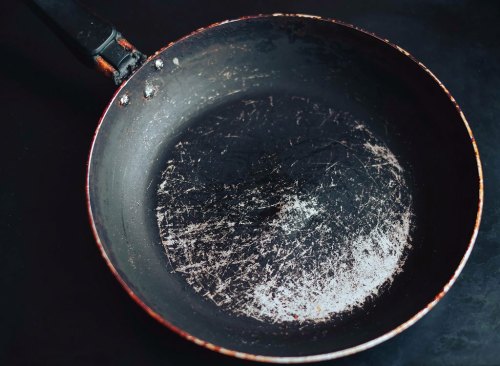
Pan Usage for over 2 years
After approximately 2-3 years of use, it is advisable to replace your pan with a new one. Because prolonged cooking at high heat causes the non-stick coating to deteriorate, forming a harmful smoke layer for health. Furthermore, the non-stick capability of the pan is no longer as good as it used to be.
Pan Discoloration
Rusty and discolored pans are signs that it’s time for you to buy a new one. If rust or other materials from the pan fall into the food, they can be harmful to health.
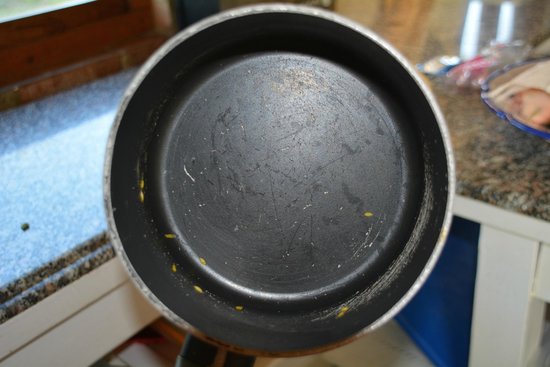
To ensure the durability of your non-stick pan during cooking, avoid using corrosive materials such as knives, plates, tongs, or metal spoons to flip the food.
Do not scrub the non-stick pan with an aluminum scouring pad. It is recommended to clean the non-stick pan with a loofah or sponge, and a soft cloth to protect the non-stick layer and prevent toxic substances from contaminating the food while cooking.
Avoid leaving the pan on hot stoves when there is no oil inside. With the electrostatic coating on the outside, the non-stick pan heats up faster than regular pans. If oil or other liquid is suddenly poured into it, the non-stick coating may chip off easily.
Use the pan at a moderate temperature, not exceeding 260 degrees. High temperatures can damage the pan and the non-stick coating, which can be toxic.
According to Khoevadep
5 Easy Tips to Remove Burnt Stains and Residue from Cookware
If you’ve ever cooked caramel for braised dishes or desserts, you’ve probably encountered the stubborn issue of burnt sugar sticking to the bottom of your pots and pans, making them difficult to clean. But fret not, because now you can easily remove those burnt sugar stains with a few simple tricks. Let’s find out how!















